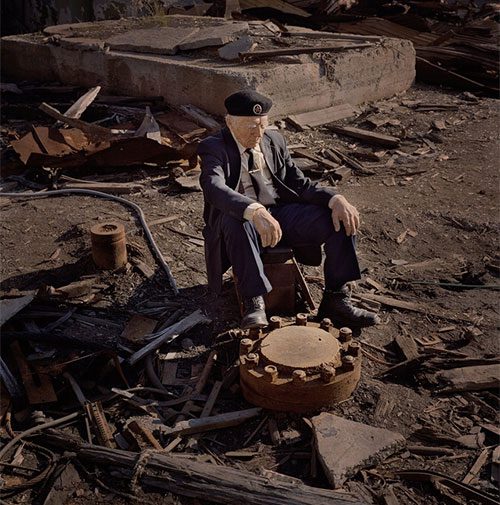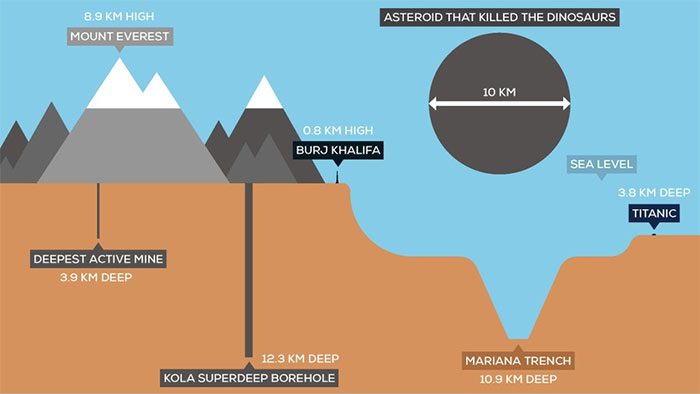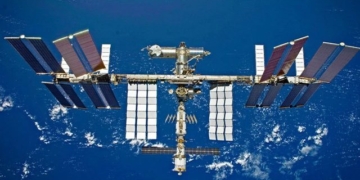The Kola Superdeep Borehole is the deepest drill hole in the world, reaching a depth of 12,262 meters (40,230 feet). This borehole was drilled on the Kola Peninsula in Russia, starting in 1970 and completed in 1989.
In the 1960s, alongside the great space race, the United States and the Soviet Union were also competing for power in another form: exploring the “gates” that could lead to the center of the Earth, or at least as close as possible.
Deep drilling projects began in the 1960s. American scientists introduced the Mohole project to investigate the components within the Earth’s interior.
This project was named after scientist Andrija Mohorovicic, who discovered the depth of the boundary between the Earth’s crust and mantle.

Mr. Yuri Smirnov, a geologist and poet, volunteered to protect the “Kola Superdeep Borehole” until he passed away at the age of 87. (Photo: Topic).
By 1970, the Soviet Union joined the race with a drilling project called “Kola Superdeep Borehole” in the port city of Murmansk, just outside Norway’s borders near the Barents Sea.
The initial goal of the project was to drill to a depth of 15 km underground. Although this depth was not achieved, it remains the deepest borehole ever created by humans on land, and the sample collection process still astonishes modern scientists.
“The Lid” Covering the Deepest Hole in the World
Amid the ruins of the abandoned project site in Murmansk province lies a round object resembling a disk. Beneath it, with a diameter of only 23 cm, is the world’s deepest borehole known as the Kola Superdeep Borehole.
This man-made hole, located on the Kola Peninsula in Russia, reaches depths exceeding 12 km. For comparison, the depth of the Kola drill is equivalent to the combined height of Mount Everest and Mount Fuji. Meanwhile, the Mariana Trench, the deepest point on Earth, has a maximum depth of only 10,971 km.
Despite its impressive depth, the Kola drill is still relatively shallow compared to the Earth’s total depth. In total, this borehole has penetrated only about 1/3 of the Earth’s crust and reaches 0.2% of the distance to the Earth’s core.

Comparing the depth of the Kola hole with many famous locations such as the Mariana Trench, Mount Everest, and the world’s tallest building, Burj Khalifa. (Photo: Bored Therapy).
The project also took a considerable amount of time to reach a depth of over 12 km. Drilling at Kola began on May 24, 1970, with the aim of drilling as deep as possible. At that time, scientists predicted that the drill could reach approximately 15 km.
By 1979, the project had broken all world records for artificial holes by surpassing about 9.5 km. In 1989, drilling reached a depth of 12,262 km vertically. The Kola Superdeep Borehole officially became the deepest point ever reached by humans.
However, by 1992, scientists could not continue. The reason was that the temperature at a depth of 12 km had reached 180 degrees Celsius.
If they continued drilling to the target of 15 km, the temperature there could rise to nearly 300 degrees Celsius, which would certainly destroy all drilling equipment.

The metal cap covering the world’s deepest artificial hole. (Photo: Topic).
Initially, the drill penetrated the granite layer quite easily. However, once the drilling reached a depth of about 6.9 km, the rock became dense and more difficult to drill.
As a result, the drill bit broke, and the drilling team had to change the drilling direction multiple times. Engineers continued to drill, but as the drill went deeper, the temperature of the Earth’s core became increasingly hotter.
Interesting Discoveries Beneath the Gates to the Earth’s Core
The Soviet Union persevered with this project until 1992 but was never able to drill as deep as they did in 1989. Ultimately, the drilling site was officially closed and sealed in 2005.
Although they could not reach the intended depth, scientists still discovered many intriguing facts about the Earth’s crust. They found that at a depth of 12 km underground, there was still water, which was previously thought impossible. Gases such as helium, hydrogen, nitrogen, and even CO2 were also detected during the drilling process.
Researchers believe that water may have been forced out of rock crystals due to the extreme pressure inside the Earth.
They also discovered 24 new species of single-celled organisms, excavating rocks that are 2.7 billion years old. The discovery of these organisms at a depth of 7 km opens up hypotheses about living organisms that can withstand pressure and high temperatures to adapt underground.

A core sample taken from the Kola drill and a piece of metabasalt rock at a depth of over 6 km in the Earth’s crust. (Photo: Pechenga).
The most compelling evidence is the extremely small fossils encased in organic compounds that remained surprisingly intact despite the extreme pressure and temperature of the surrounding rock.
The Kola Borehole remains the deepest on land, but this depth has been surpassed at sea. In 2008, Qatar drilled a hole 12,289 km deep in the Al Shaheen oil field. In 2011, the Sakhalin-I project drilled 12,376 km deep in the waters off the coast of Sakhalin Island in Russia.
Above the Kola borehole today is a rusty metal cap with a diameter of 23 cm that has been welded shut. According to ABC, if someone were to fall into this hole, it would take 3-4 minutes to hit the bottom. Local residents say the hole is so deep that it has been nicknamed the “Well of Hell.”


















































